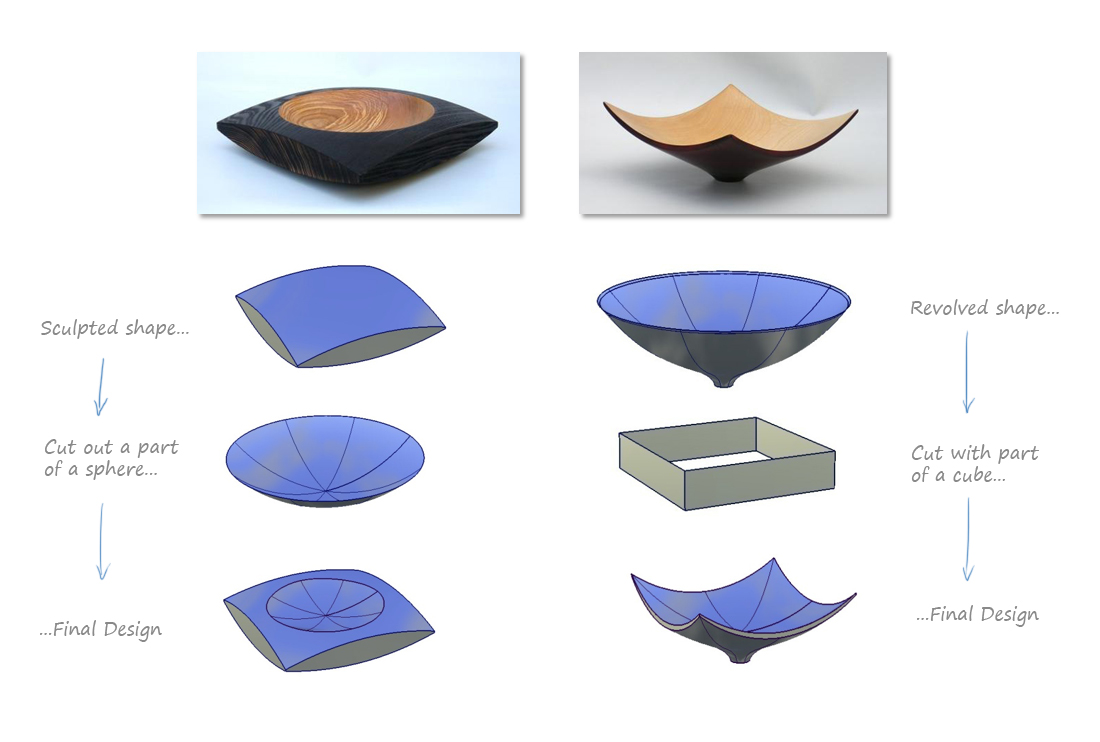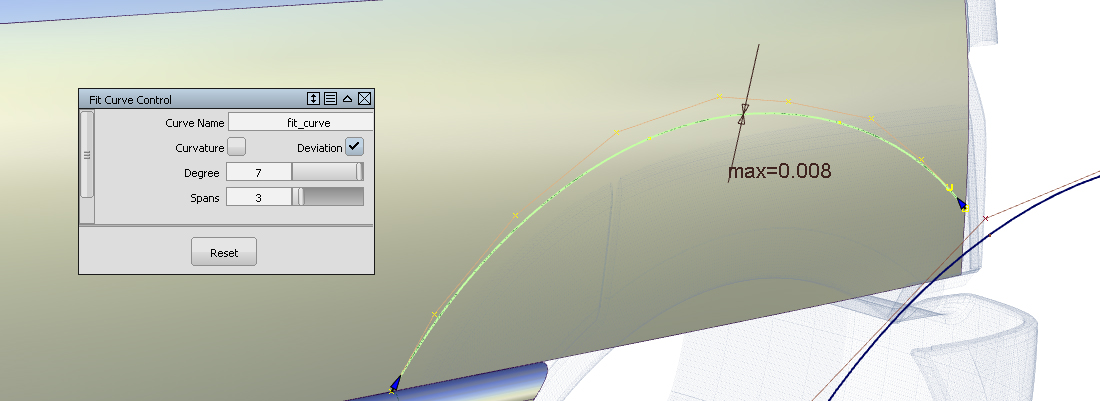When the design allows, 'overbuild' the surfaces first, and then intersect and trim to achieve the final design:

This is because trimmed edges will typically have more CVs than 'natural' surface edges, so avoid building surfaces from them where possible:

Applying the Rule
When analyzing a design and trying to work out a modeling strategy, try to imagine simpler shapes that can be combined. It sometimes helps to imagine how you might make the design in a workshop from foam or wood.
Some designs can easily be understood as 'constructed shapes', and these are where you will use this approach more often. For other products, like a vehicle exterior, this doesn't really apply, as the surfaces are more like a 'patchwork quilt'.

Breaking the Rule
It's usually not possible to complete a whole design without needing to build from a trimmed edge at some point. The next section describes some techniques that can reduce the occurrence of extra spans.
Theory and Practice
Using the Rebuild Options
When overbuilding isn't a practical option, some tools offer a rebuild option that will improve the quality of the surface derived from the trimmed edge:
-
Surfaces > Rail
-
Surfaces > Square

Using the Explicit Control
Another option is to use the Explicit Control Options to override the automatic parameterization of the Square or Rail tool. However, often the continuity won't be matched, so you need to use with care.

Rebuilding the edge with an accurate curve
This is an advanced technique, and limited because you can only achieve G0 positional continuity to a curve. (Higher continuity has to be achieved by manually sculpting CVs).

Tools that achieve this:
-
Curve Edit > Fit Curve
-
Surface Edit > Create Curves-on-Surface > Project (Create Curves option)